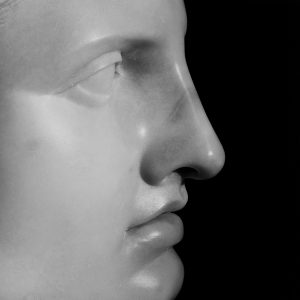Exercise 2: Recreate
Recreate a well-known image in any of the 4 genres you have explored. Consider the conventions, styles and themes specific to the genre and how the image you choose to re-create speaks to those. You are free to interpret ‘re-creation’ as imaginatively as you like, subverting conventions or adhering to them.
Share
Using the Challenging Genres Forum share your work, including; your image, the image that inspired it and a short paragraph explaining your process.
Reflect
Write up the activity on your learning log. After sharing the image and receiving any feedback, reflect on the experience in a short post on your learning log.
I’ve always struggled with the traditional portraiture claim- ambition-delusion? —that the portrait reflects an individual’s inner world. People are too complex and unpredictable for that. For sure, when a famous person is photographed, let’s say the late Queen Elizabeth, by a famous photographer, say Anne Liebovitz, both bring an established reputation and history to the table.
As viewers, we have expectations regarding the outcome. It’s advertised as ‘the Queen’s Portrait’, and this has its own historical and established conventions associated with the portrait genre.
Gabriel Garica Marquez once observed, ‘Everyone has three lives: a public life, a private life and a secret life’ -which one did Liebovitz set out to take? Looking at the images and accounts from Leibovitz herself, they are traditional in approach and deliver everything you would expect from a portrait of a monarch. We can only look at the images and speculate what was going through the Queen’s head, what she really thought, and who she really was as a person. I used to tell my kids that the Queen swore like a trooper in private-this was more a reflection of how utterly unknowable one of the most photographed people in history was.
 I have taken inspiration from Robert Mapplethorpe’s Applo 1988 for this exercise. It’s a portrait of the God Appolo, an idealized, perfected representation of the human form. In it, Mapplethorpe invites viewers to contemplate art, beauty, and identity. Like people, it’s unknowable. Graham Clarke likened it to a ‘portrait to a myth, not a history; to an ideal, not an individual’.
I have taken inspiration from Robert Mapplethorpe’s Applo 1988 for this exercise. It’s a portrait of the God Appolo, an idealized, perfected representation of the human form. In it, Mapplethorpe invites viewers to contemplate art, beauty, and identity. Like people, it’s unknowable. Graham Clarke likened it to a ‘portrait to a myth, not a history; to an ideal, not an individual’.
The image I have used is of mannequins—like people, they come in all shapes and sizes—these two happen to be twins. When people see twins (I am the father of twins), they tend to see them as one—they talk about the ‘twins’ and not by their individual names (more so when they are young). They marvel at their likeness; they look at two but see no one.
For the mannequins, this is the only face they will ever have. It will never change, their identity is fixed. But a photograph also fixes identity to a specific moment at a specific point in time, so we can only ever speculate about a portrait and what it says about a person.

Unlike people, mannequins only ever have one face, one expression, but photos are like that anyway…so with portraits, we can only ever speculate about the inner workings of the sitter
References
Bate, David, Photography: The Key Concepts,London, Bloomsbury
Clarke,Graham,1997, The Photograph,New York,Oxford University Press

